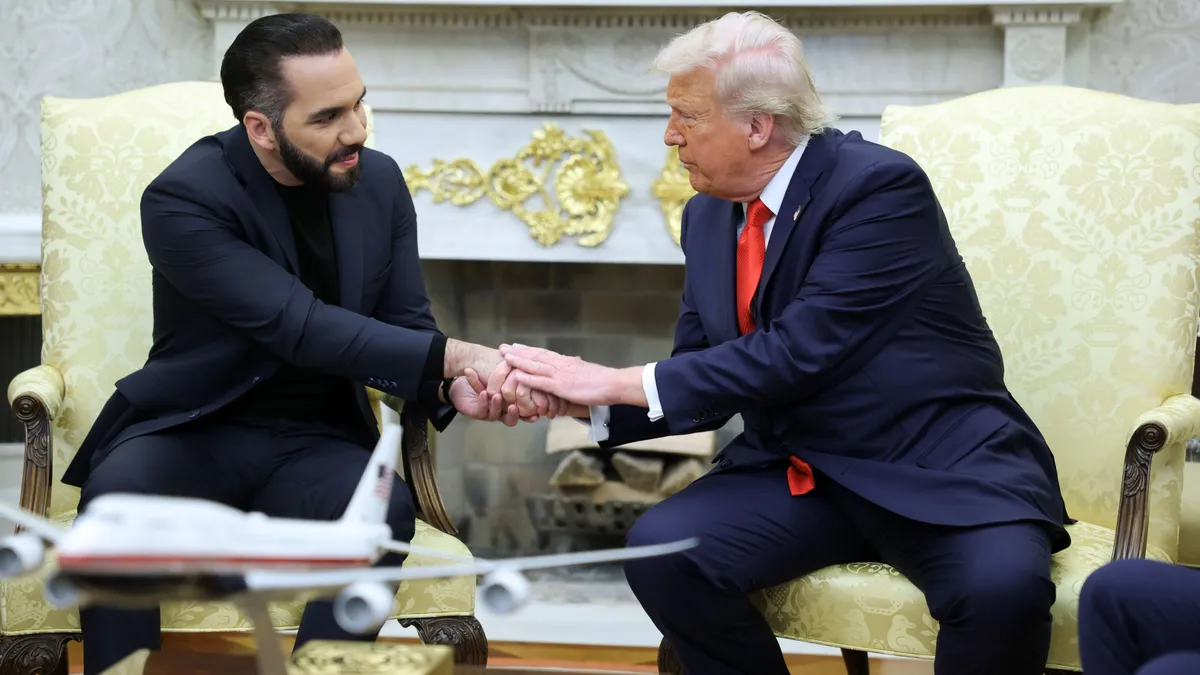In the hours after the Occupational Safety and Health Administration unveiled its emergency temporary standard requiring some employers to implement COVID-19 vaccine mandates, a key question emerged: How exactly is an agency of approximately 1,850 inspectors supposed to enforce something this sweeping?
It is something employers are considering ahead of the Jan. 4 deadline — though much of what the Brobdingnagian, 490-page document requires will actually need to be put in place 30 days from the date of publication, said Alana Genderson, associate at Morgan Lewis. The 30-day deadline applies to all sections of the ETS except for paragraph (g), which requires employees who are not fully vaccinated to be tested for COVID-19.
"Savvy employers are working on these policies now," Genderson added. "These deadlines are going to hit and they are going to hit quick."
Other legal experts believe many employers will wait things out, given the likelihood of a legal challenge. "I do think there's a sense that employers are waiting to see if this thing gets enjoined in the next couple of weeks," said Michael Jones, member at Eckert Seamans. "The employers that wanted to do a mandate did it already, and the ones that haven't are the ones that were, for whatever reason, not at all thrilled at the prospect of putting in a mandate."
Retention concerns are some of the biggest hangups, he continued. Even OSHA acknowledged this, stating in the ETS that "employer vaccination mandates could lead to employee turnover; employees could either leave on their own volition or employers who have instituted strict vaccination policies may fire workers who are not vaccinated, or place them on unpaid leave." Though the agency also laid out a case for why a mandate also could attract workers who prefer to work with employers that have such a policy.
But waiting for legal battles carries risk, particularly if an employer has not previously experienced an OSHA inspection, Travis Vance, partner at Fisher Phillips, said during a virtual media event Thursday. Such employers "may flaunt the concept that there is a standard that they simply cannot comply with," he noted, due to potential turnover or other concerns. "If an employer completely ignores this, OSHA is ready to send a message to bad actors."
Todd Logsdon, also a partner at Fisher Phillips and a speaker at the virtual event, echoed that thought. "I do think a lot of employers are going to wait, and I think you're really playing roulette doing that," he said, adding that employers may want to be ready to execute on the requirements promptly — otherwise, they may need to pay close attention to any subsequent developments. "It depends if you're a gambler, I guess."
After the 5th U.S. Circuit Court of Appeals temporarily stayed the ETS over the weekend, Vance, Logsdon and Fisher Phillips Associate Chad Zimlich published an article in which they said employers might want to continue familiarizing themselves with the ETS and its requirements; "We advise employers to spend the coming weeks preparing for the ETS as if it will take effect but waiting to implement its measures until the final judicial outcome is certain."
Employers found to be violating the ETS could face financial penalties. Serious and other types of violations carry a maximum penalty of $13,653 per violation, while willful or repeated violations carry a $136,532 maximum per violation.
Any part of the regulation could be cited in handing out a violation, Vance said, and OSHA may assess such violations on a per-employee basis. To borrow Vance's example, if the agency finds that an employer has failed to comply with the ETS requirement that it keep COVID-19 vaccination records for a number of employees, a penalty may be imposed for each individual employee record the employer failed to keep.
Could OSHA focus on certain areas more than others?
OSHA inspectors likely will not be able to visit all of the thousands of worksites covered by the ETS, said Jones, though he believes that agency "probably will try to make examples out of some employers." Inspectors, he added, can issue citations and fines on a complaint basis, though employers also can appeal these.
Jones said he also foresees certain aspects of the ETS being less of a concern for OSHA compared to others. Recordkeeping, for example, may not be as high of an item on the agency's list of enforcement priorities compared to tracking employers that fail to implement a mandate or a mask or testing requirement.
"The biggest thing is a policy," Jones said. "That's going to be a primary concern of OSHA. They're not going to spend a lot of time digging through proof of vaccination records on file."
Genderson said she both agreed and disagreed that any one component of the ETS is less important for employers than the others. "If OSHA conducts a workplace inspection, they're going to ask for employee vaccine or testing records — this is not just a paper exercise," she said. "Having said that, OSHA's top priority is compliance with the underlying substantive requirements of the ETS."
How will employers handle testing costs?
The ETS surprised some observers by essentially allowing employers to pass on the costs of weekly testing to workers who choose to remain unvaccinated. That has led to the suggestion that it may benefit certain employers to cover those costs anyway.
That choice will vary from employer to employer, Jones said. For those who have a relatively small number of employees who require testing, "that may be a cost for you that makes sense to absorb," he explained. But for those with a multitude of employees who require testing, "those expenses are going to add up quickly."
Of course, state and local jurisdictions may have statutes that require employers to pay for testing, said Devjani Mishra, shareholder at Littler Mendelson, and it may be challenging for workers to pay for testing. OSHA said its position on the cost of testing "creates a financial incentive for those employees to become fully vaccinated and avoid that cost," but the agency also said it "expects that some workers and/or their representatives will negotiate the terms of payment."
For unvaccinated employees who do not regularly come into a workplace where other individuals, such as co-workers or customers, are present, the ETS requires that these employees be tested within seven days prior to coming to the workplace, Vance noted.
Which legal arguments are likely to come up?
In drafting an exhaustive preamble to the requirements placed on employers by the ETS, OSHA effectively "pre-filed their brief," Logsdon said, indicating that the agency anticipates several legal challenges. Vance opined that the agency "wanted to go above and beyond explaining what their legal basis was."
One of the items addressed in the ETS concerns the agency's rationale for establishing the 100-employee threshold.
Per the ETS, "employer size provides a clear measure that is easy for employers (and OSHA) to track, as opposed to an alternative such as a workplace-based approach, which could fluctuate from day to day and mean more places and information for the employer to track." Additionally, "larger locations are statistically more likely to be exposed to someone with COVID-19 during the course of their shifts, and thus face a heightened risk of virus transmission," OSHA said.
Vance and Logsdon perceive other potential areas a challenge could target. For example, OSHA may have an "uphill battle" in attempting to defend its decision to label COVID-19 exposure a "grave danger" for unvaccinated workers, Logsdon said. That is because the agency will need to show that COVID-19 is a "new hazard" and that an ETS is necessary to protect employees from danger associated with that hazard.
Constitutional issues also may come into play. Vance said litigants may argue that the ETS violates the nondelegation doctrine, which Cornell Law School's Legal Information Institute defines as "a principle in administrative law that Congress cannot delegate its legislative powers to other entities." The argument could be, for instance, that "this should be part of a law that Congress adopts as opposed to a fiat from the executive branch," Vance said.
Another theory posits that the ETS could violate the major questions doctrine which, Vance said, posits that courts will not defer to an agency's statutory interpretation that concerns questions of vast economic or political significance.
Vance said he believed the ETS showed that OSHA had taken the perspective that the ETS preempts state laws regarding vaccination mandates, such as Montana's law prohibiting employers from denying a person employment opportunities, barring a person from employment or otherwise discriminating against a person on the basis of vaccination status.
Individual employers have queried coalitions and business groups about potential legal actions "so that they will not have a target on them," Vance added. Jones concurred; "I don't know that employers themselves are going to want to foot the bill or face the publicity of mounting the challenges themselves," he said.
And just because a lawsuit results in an injunction issued by an appeals court does not mean that such an action would apply nationwide, Vance noted. Moreover, if a circuit split occurs, "I think it could take a fast track to the Supreme Court," Logsdon said.





















